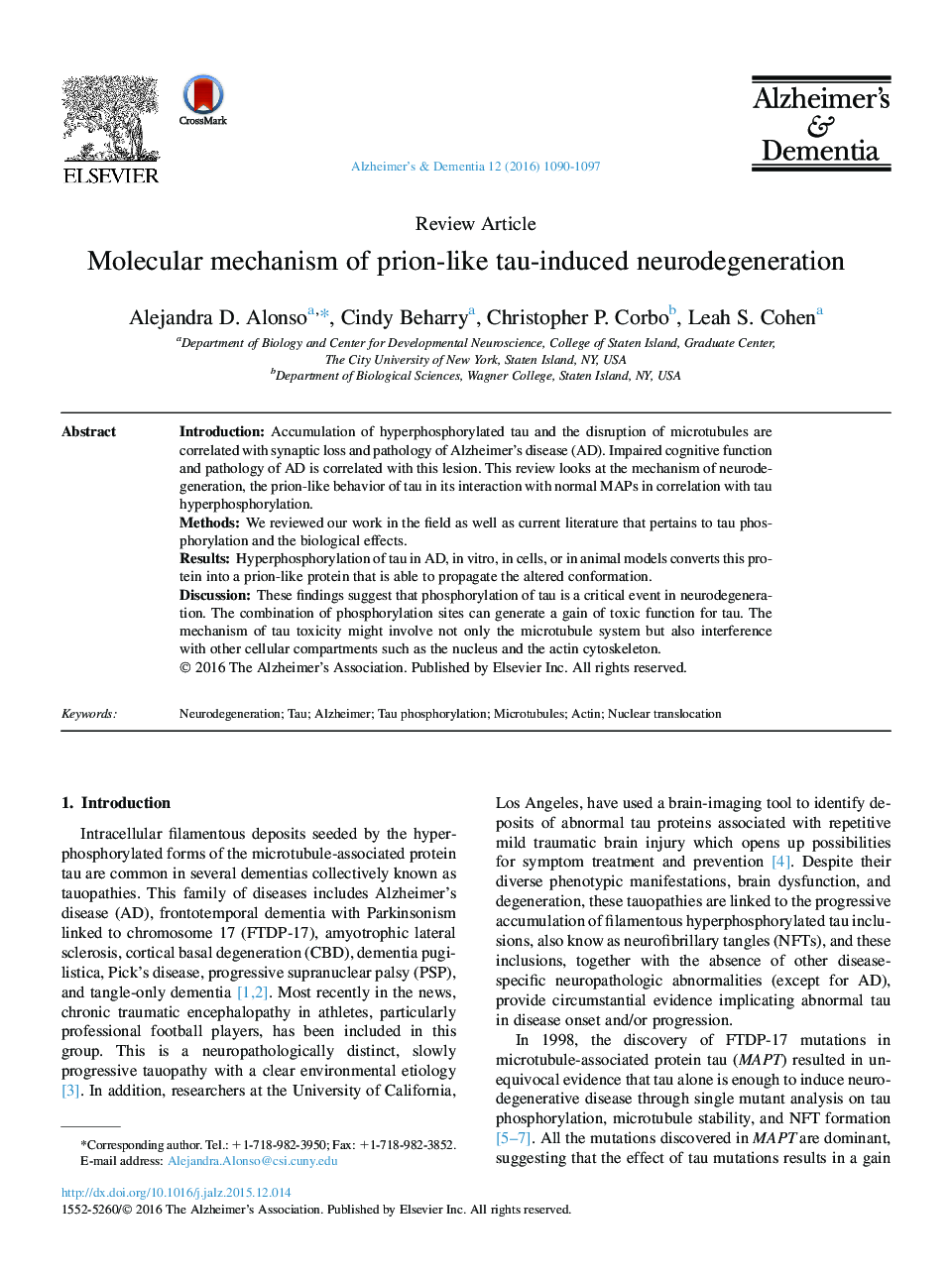| کد مقاله | کد نشریه | سال انتشار | مقاله انگلیسی | نسخه تمام متن |
|---|---|---|---|---|
| 5623742 | 1406221 | 2016 | 8 صفحه PDF | دانلود رایگان |

IntroductionAccumulation of hyperphosphorylated tau and the disruption of microtubules are correlated with synaptic loss and pathology of Alzheimer's disease (AD). Impaired cognitive function and pathology of AD is correlated with this lesion. This review looks at the mechanism of neurodegeneration, the prion-like behavior of tau in its interaction with normal MAPs in correlation with tau hyperphosphorylation.MethodsWe reviewed our work in the field as well as current literature that pertains to tau phosphorylation and the biological effects.ResultsHyperphosphorylation of tau in AD, in vitro, in cells, or in animal models converts this protein into a prion-like protein that is able to propagate the altered conformation.DiscussionThese findings suggest that phosphorylation of tau is a critical event in neurodegeneration. The combination of phosphorylation sites can generate a gain of toxic function for tau. The mechanism of tau toxicity might involve not only the microtubule system but also interference with other cellular compartments such as the nucleus and the actin cytoskeleton.
Journal: Alzheimer's & Dementia - Volume 12, Issue 10, October 2016, Pages 1090-1097